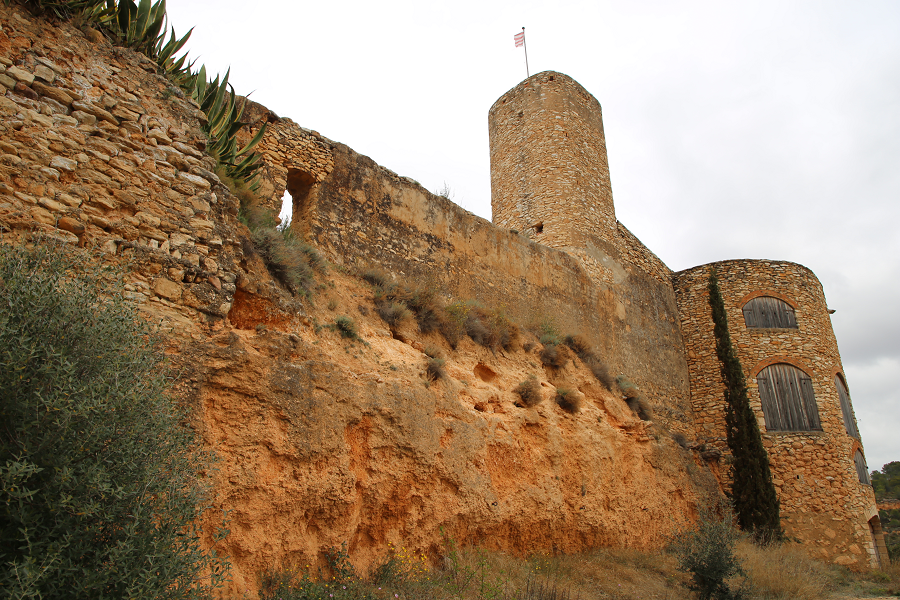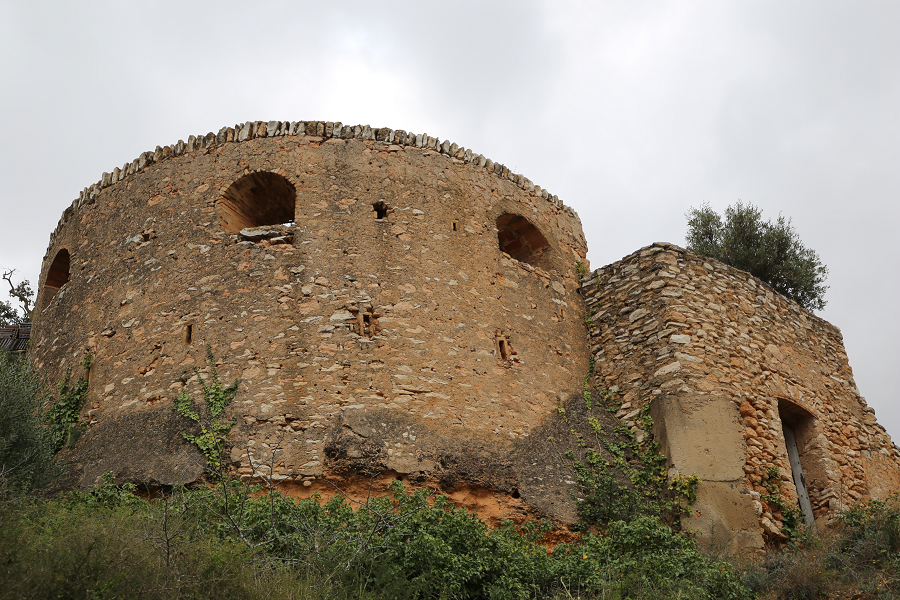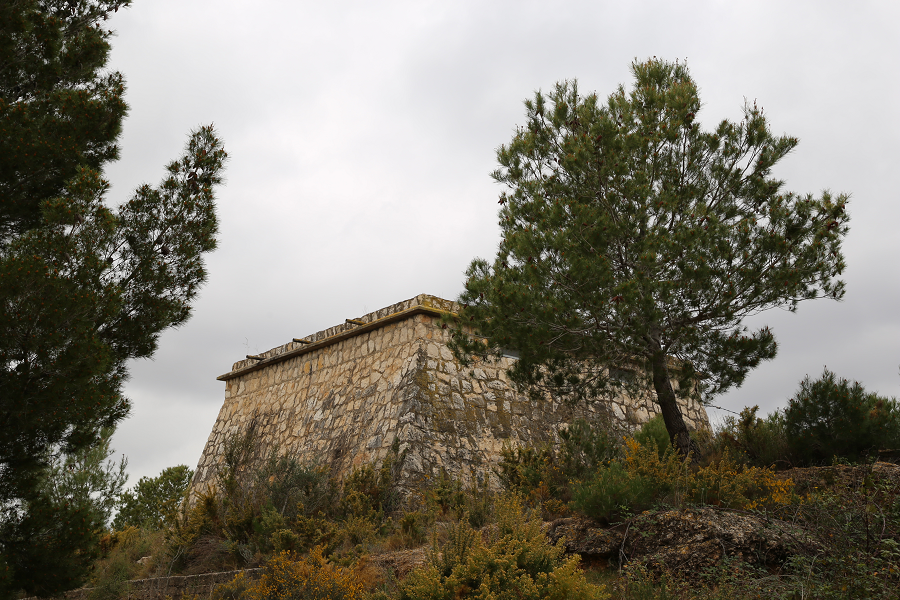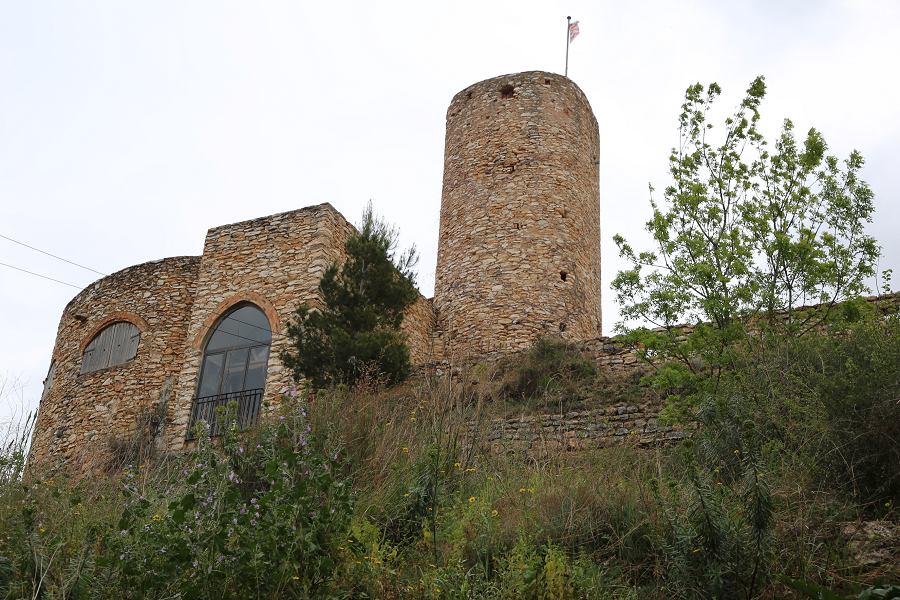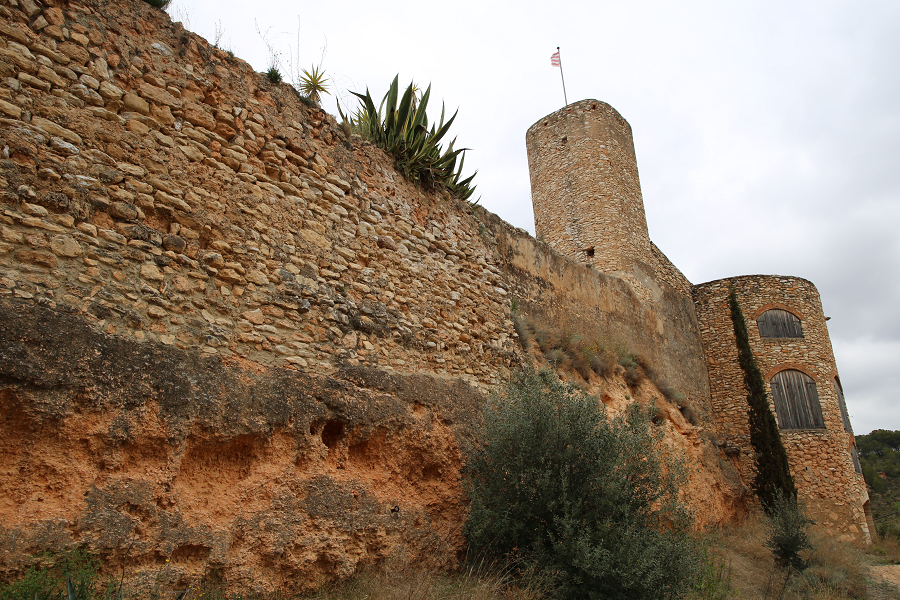Vila-rodona castle (cat. El castell de Vila-rodona) is an example of the evolutionary achievements of some of the fortifications built between the 10th and 12th centuries at Gaià river, Tarragona province, Catalonia, Spain. Its remains, that right on arrival to the town will become clear to visitor, are the final result of a long evolution that begun surely in the 11th century and which closed in the 70s of the 20th century.
Vila-rodona castle is located at the highest part of the town, which structures its urban network from the same left bank of the Gaià up to the castle. On the eastern part of the castle, the Can Ferrer road rises amidst cultivated fields climbing the landscape. The Castle of Vila-rodona sees the passage of Gaià river from north to south. In the north we can distinguish the castles of Selmella and Saburella and to the northwest the dip of the Cabra saddle. From the west to the northwest Miramar and the Carbonaria mountain range can be seen. To the west, Prades and La Mussara, and to the southwest, Vilabella. To the south we will see the Torre del Moro, Montferri and Vilardida on the left side of the river and La Serra on the right bank. To the east there is the Montmell range.
The castle of Vila-rodona, together with other lands of the middle Gaià, owes its repopulation to the episcopal headquarters of Barcelona. In the early 13th century, the lands of the current municipality of Vila-rodona depended to the Montmell castle, located in a strategic place, ideal for the defence of the territory. Although from the settlement letter of Bishop Vives (977) it is thought that these lands were inhabited, but the documentary record is not available until the second half of the 12th century. It is then that the settlement is consolidated definitively, as they had supposedly suffered Saracen attacks until the first half of the 12th century. The defensive needs and territorial advance make it seem probable that the castle was built during the 11th century, as the secondary fortress of the Montmell castle. In 1157 the bishop granted an establishment of two families, one on each side of the house.
In 1161 the bishop Guillem de Torroja established a mill on the Gaià. And as such these lands are known as Castro, a place name with a clear reference to the growth of an urban centre near the castle. Soon after, the settlement became known as Vilarodona, an old toponym recovered at the beginning of the 13th century when it was constituted as a territory on its own, throughout its history, it depended on the bishopric of Barcelona. Its territories were also affected by the proximity to the monastery of Santes Creus, both by the lay lords (Guisla de Banyeres) as well as the bishopric, who donated various honours and possessions to the Cistercian. The first direct reference to the castle dates from the beginning of the 14th century, and documents the passage of the Bishop Pons de Gualba of Barcelona, returning from the Provincial Council of the city of Tarragona. In 1337 the chapel of Sant Llorenç, located inside the parish of the episcopal castle of Vila-rodona is mentioned.
Vila-rodona Castle plays an important role during the wars against John II (1462-1472). Vila-rodona is one of the places that were most resistant opposing the monarch in his struggle with the Provincial Council of Barcelona. In 1464, it was the only faithful town to the country’s institutions, defended by Joan de Gaiàs and Guillem Pina against the attacks of Rodrigo de Rebolledo and after, the ones of archbishop of Zaragoza, who occupied the town conquering street by street, but could not defeat the castle, finally occupied in August 1465 by Rodrigo de Rebolledo.
At the end of the 15th century, according to the hearth tax, there were 48 families in the castle town. During the War of the Reapers, the place documents French troops, and in 1647 the French reconstructed the walls and fortifications, including the castle. Vila-rodona is occupied by the French troops in 1808, and the castle becomes a lodging place of Spanish troops in 1811. During the First Carlist War (1833-1841), the castle is a refuge for the whole town which officially defended the cause of queen Maria Cristina. In the mid 19th century, the town had 1,679 inhabitants and was a judicial party of Valls and diocese of Barcelona.
With the confiscations, which lead to the extinction of the stately regime, the castle of Vila-rodona was sold to Josep Sanahuja, although during the interval of the third Carlist wars, in 1874, it was owned by the municipality and got reformed and conditioned for the troops. Some tell that the watchtower in the upper part of the castle was constructed with stones from the monastery of Santes Creus.



